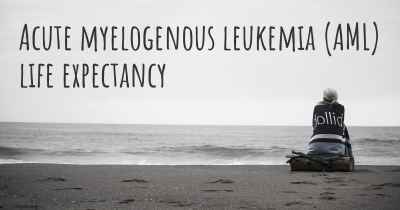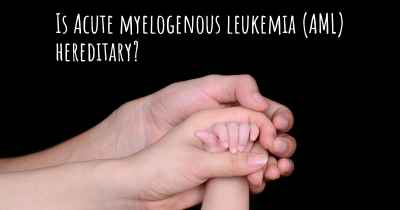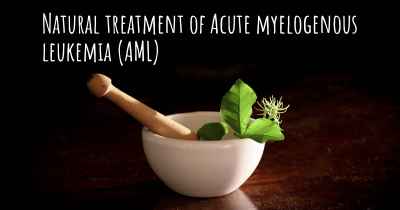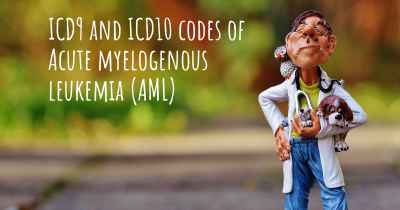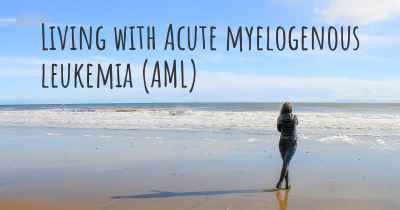Is it advisable to do exercise when affected by Acute myelogenous leukemia (AML)? Which activities would you suggest and how intense should they be?
See if it is advisable for people with Acute myelogenous leukemia (AML) to practice sports and which ones are the most recommended if you have Acute myelogenous leukemia (AML)
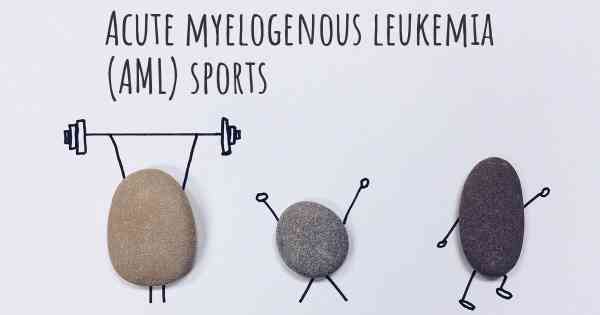
Is it advisable to do exercise when affected by Acute Myelogenous Leukemia (AML)?
Acute Myelogenous Leukemia (AML) is a type of cancer that affects the bone marrow and blood. It is a serious condition that requires medical treatment, including chemotherapy, radiation therapy, and sometimes stem cell transplantation. When dealing with such a diagnosis, it is important to prioritize medical advice and treatment plans.
Exercise and AML
While exercise is generally beneficial for overall health and well-being, it is crucial to consult with your healthcare team before starting or continuing any exercise regimen when affected by AML. The impact of exercise on individuals with AML can vary depending on the stage of the disease, treatment plan, overall health, and individual circumstances.
Benefits of Exercise
Regular exercise can have numerous benefits for individuals with cancer, including AML. It can help improve physical fitness, maintain muscle strength, enhance mood, reduce fatigue, and improve overall quality of life. Exercise can also help manage treatment-related side effects, such as nausea, pain, and sleep disturbances. However, it is important to note that the intensity and type of exercise should be tailored to the individual's specific condition and capabilities.
Consulting with Healthcare Team
Before starting any exercise program, it is crucial to consult with your healthcare team, including your oncologist or hematologist. They will have a comprehensive understanding of your medical history, current condition, and treatment plan. They can provide personalized advice and guidelines regarding exercise based on your specific situation.
Types of Exercise
The type of exercise recommended for individuals with AML may vary depending on their overall health, treatment phase, and individual preferences. Generally, a combination of aerobic exercise, strength training, and flexibility exercises can be beneficial.
Aerobic Exercise: Aerobic exercises, such as walking, swimming, cycling, or low-impact aerobics, can help improve cardiovascular fitness, increase endurance, and reduce fatigue. Start with low-intensity exercises and gradually increase the duration and intensity as tolerated.
Strength Training: Strength training exercises, using resistance bands or light weights, can help maintain muscle strength and prevent muscle loss. It is important to start with light weights and gradually increase the intensity under the guidance of a qualified professional, such as a physical therapist or exercise physiologist.
Flexibility Exercises: Stretching exercises, yoga, or tai chi can help improve flexibility, reduce muscle tension, and promote relaxation. These exercises can also be beneficial for managing stress and improving overall well-being.
Exercise Intensity
The intensity of exercise should be individualized and based on your overall health, treatment phase, and energy levels. It is important to listen to your body and not push beyond your limits. Start with low-intensity exercises and gradually increase the duration and intensity as tolerated. If you experience any unusual symptoms or discomfort during exercise, it is important to stop and consult with your healthcare team.
Exercise Precautions
While exercise can be beneficial, there are certain precautions to keep in mind when affected by AML:
- Always consult with your healthcare team before starting or continuing any exercise program.
- Avoid exercising during periods of low blood counts or when experiencing severe fatigue.
- Stay hydrated and avoid overheating during exercise.
- Listen to your body and adjust the intensity and duration of exercise based on how you feel.
- Avoid high-impact activities or contact sports that may increase the risk of injury or bleeding.
- Consider working with a qualified professional, such as a physical therapist or exercise physiologist, who has experience working with individuals with cancer.
Conclusion
While exercise can have numerous benefits for individuals with AML, it is important to prioritize medical advice and treatment plans. Consult with your healthcare team before starting or continuing any exercise program. They can provide personalized advice and guidelines based on your specific condition and treatment plan. Remember to start with low-intensity exercises and gradually increase the duration and intensity as tolerated. Listen to your body, and if you experience any unusual symptoms or discomfort, stop exercising and consult with your healthcare team.
